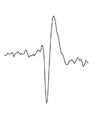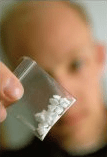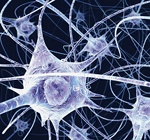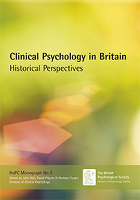The mercurial David Bowie has left the capsule and the world is a poorer place. His circuit is dead, and there definitely is something wrong, at least for those of us still on Planet Earth.
There have been many tributes, noting Bowie’s impact on music, art and cinema, and the extent of his eclectic tastes. But one significant part of Bowie’s life has barely merited a mention – his experiences with psychosis – despite the fact that it had a major impact on his life and featured in some of his most important work.
Bowie was familiar with psychosis from an early age, not least because it affected his close family. Two of his aunts were reportedly diagnosed with schizophrenia and third was confined to an asylum.
One of Bowie’s most influential early role models, his half-brother Terry, was diagnosed with schizophrenia and reportedly had marked periods of psychosis.
Here is Bowie, discussing one of his brother’s psychotic episodes, in a 1998 documentary for VH1:
Bowie’s brother was admitted to now defunct Cane Hill psychiatric hospital in South London and the experience heavily influenced 1970’s The Man Who Sold the World album with a drawing of the hospital appearing on the original sleeve art.
One of the songs on that album, All the Madmen, vividly describes madness and treatment in the old asylums, and was discussed in a 2010 article for the British Medical Journal:
“All the Madmen” was inspired by the mental health problems of David Bowie’s brother and was released 39 years ago (before Bowie achieved major fame), on the album The Man Who Sold the World. It recognises the separation from society of mentally ill people, who are sent to “mansions cold and grey.” In a lucid interval, spoken instead of sung, the national shame of mental illness and policies of alienation and institution are questioned with sadness: “Where can the horizon lie / When a nation hides / Its organic minds in a cellar.”
Faced with the prospect of discharge, the patient protagonist recognises his comfort in Librium, considers his ability to cope outside, and pushes the risk buttons with, “I can fly, I will scream, I will break my arm / I will do me harm.” He adopts a catatonic posture, standing with a foot in his hand, talking to the wall. He is accepting of electric shock treatment. When he asks, “I’m not quite right at all . . . am I?” is this a cryptic taunt that he knows he is putting it on, pushing the psychiatrist to keep his place in the institution? Or, more worryingly, is he questioning his own sanity and certainty?
Perhaps unsurprisingly, the themes of madness pervade Bowie’s work. The title track for the Aladdin Sane album (a play on “A lad insane”) was inspired by his brother, as was the song Jump They Say. Some other references are more obvious, such as in the song I’m Deranged, while some only allude to altered states and psychological alienation, as in The Man Who Sold the World.
Little known is that his most famous character, Ziggy Stardust, was based on someone who experienced striking periods of psychosis. In a 1996 interview, Bowie recounted how Ziggy was based on the obscure rock star Vince Taylor who Bowie met several times, presumably between the periods Taylor spent in psychiatric hospital.
Bowie himself was widely thought to have experienced an episode of psychosis himself, some years later, largely due to a period when he was taking very large amounts of cocaine while working on the album Station to Station.
Several biographies describe how he feared evil entities floating past his window, thought The Rolling Stones were sending message to him through their music and believed witches were stealing his semen.
But the semantic traffic between madness and Bowie’s work was not solely one way. The medical literature has reports of Bowie featuring in the delusions of people with psychosis. One case report described a “32-year-old divorced white female with a long history of affective and behavioral problems”:
She believed she was secretly married to the rock star, David Bowie, after supposedly meeting in a church camp several years previously. She described seeing him “wait for her” outside her hospital window. The onset of this delusion coincided with a local tour by Bowie.
As Bowie was the master of looping cultural expression, making his art reference himself reacting to cultural responses to his work, it’s a return acknowledgement he may have appreciated.


 The New York Times has an excellent
The New York Times has an excellent 

 I’ve got an
I’ve got an 
